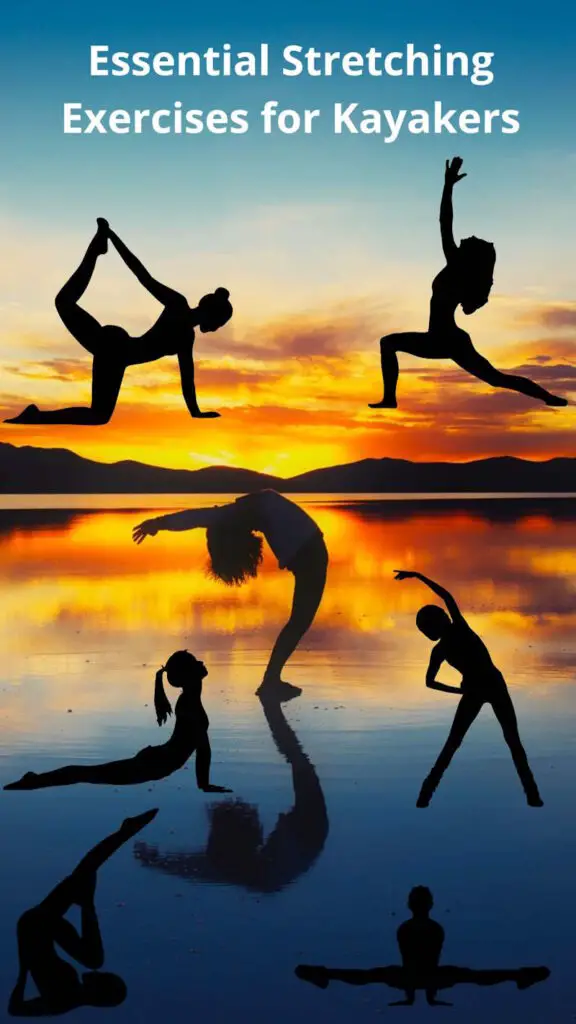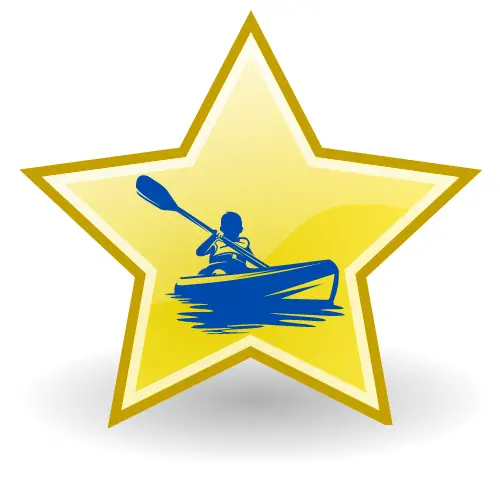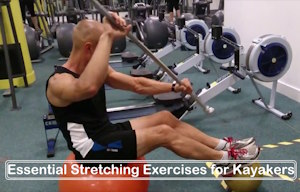Are you an avid kayaker looking to improve your performance on the water? One of the key aspects of kayaking is flexibility and mobility, which can greatly enhance your paddling technique and prevent injuries. In this article, we will explore a variety of essential stretching exercises specifically designed for kayakers. Incorporating these exercises into your regular routine will not only help you paddle with ease but also maintain a healthy and injury-free body.

Table of Contents
The Importance of Stretching for Kayakers
As a kayaker, you rely on your body’s strength, flexibility, and endurance to maneuver through the water. Stretching plays a crucial role in preparing your muscles and joints for the physical demands of kayaking. It helps improve your range of motion, reduces muscle tension, and enhances blood circulation. Additionally, stretching before and after kayaking can prevent injuries and aid in muscle recovery.
Neck Stretches: Maintaining a Supple Neck
Heading out for a kayaking adventure often involves turning your head in different directions to navigate and maintain awareness of your surroundings. Neck stretches can help alleviate tension and increase flexibility in the neck muscles. Try gentle neck rotations, side-to-side stretches, and chin tucks to keep your neck supple and relaxed.
Shoulder Stretches: Increasing Range of Motion
Strong and flexible shoulders are essential for effective paddling. Perform shoulder rolls, cross-body arm stretches, and arm circles to improve shoulder mobility and prevent stiffness. These exercises will help you achieve a full range of motion while paddling, reducing the risk of shoulder injuries.
Chest Stretches: Opening Up the Upper Body
Kayaking often requires a forward-reaching posture, which can lead to tightness in the chest muscles. Stretching exercises like doorway stretches, chest expansions, and pec stretches can counteract this tightness, improving posture and allowing for greater lung capacity while on the water.
Back Stretches: Enhancing Core Stability
Maintaining core stability is crucial for kayakers, as it provides the foundation for powerful strokes and balance. Back stretches such as cat-camel stretches, seated spinal twists, and child’s pose can help strengthen and stretch the muscles in your back, promoting better posture and reducing the risk of back pain.
Hip Stretches: Improving Lower Body Flexibility
Flexible hips are essential for generating power and stability in your kayaking strokes. Incorporate exercises like hip circles, butterfly stretches, and lunges to increase hip flexibility and strengthen the surrounding muscles. These stretches will improve your paddling technique and help prevent hip-related injuries.
Leg Stretches: Promoting Lower Body Strength and Balance
Strong and flexible legs are vital for kayakers to maintain balance and control while on the water. Include exercises like hamstring stretches, quadriceps stretches, and calf stretches in your routine to enhance lower body flexibility and prevent muscle imbalances. These stretches will contribute to better paddling performance and reduce the risk of leg injuries.
Wrist and Forearm Stretches: Enhancing Grip Strength
A strong grip is essential for effective paddling and maneuvering your kayak. Wrist and forearm stretches, such as wrist flexor stretches, wrist extensor stretches, and forearm rotations, can help improve grip strength and prevent overuse injuries. Incorporating these stretches into your routine will allow you to maintain control and paddle comfortably for longer durations.
Ankle Stretches: Ensuring Lower Body Stability
Stable ankles are crucial for maintaining balance and executing precise footwork while kayaking. Perform ankle circles, calf raises, and ankle dorsiflexion stretches to increase ankle mobility and strengthen the surrounding muscles. These exercises will enhance your stability on the water and reduce the risk of ankle sprains.
Warm-up and Cool-down Routine: Preparing and Recovering for Kayaking Sessions
Before hitting the water, it’s essential to warm up your muscles and prepare your body for the physical demands of kayaking. Incorporate dynamic exercises such as arm swings, leg swings, and torso rotations into your warm-up routine. After your kayaking session, engage in static stretches to cool down and promote muscle recovery.
Stretching Guidelines: Dos and Don’ts for Effective Stretching
To maximize the benefits of stretching, keep the following guidelines in mind:
- Perform each stretch slowly and with control.
- Breathe deeply and relax into each stretch.
- Avoid bouncing or jerking movements, as they can lead to injury.
- Focus on the muscles and areas relevant to kayaking.
- If you experience pain or discomfort, ease off the stretch.
Common Mistakes to Avoid: Ensuring Proper Form
When stretching, it’s important to maintain proper form to prevent injuries. Avoid these common mistakes:
- Overstretching: Stretch within a comfortable range of motion without pushing to the point of pain.
- Holding your breath: Remember to breathe deeply and relax while stretching.
- Neglecting opposing muscles: Balance your stretching routine by targeting both agonist and antagonist muscles.
How Often Should You Stretch: Establishing a Routine
Consistency is key when it comes to stretching. Aim to stretch at least three times a week, ideally on non-consecutive days. You can include stretching exercises as part of your warm-up, cool-down, or even during rest days to maintain flexibility and prevent muscle imbalances.
Benefits of Regular Stretching for Kayakers
Regular stretching offers numerous benefits for kayakers, including:
- Improved paddling technique and efficiency.
- Enhanced range of motion and flexibility.
- Reduced muscle soreness and tension.
- Prevention of common kayaking-related injuries.
- Increased muscle strength and endurance.
- Better overall body balance and posture.
Conclusion
Incorporating a regular stretching routine into your kayaking regimen is essential for optimizing your performance and ensuring a safe and enjoyable experience on the water. By following the stretching exercises outlined in this article, you can enhance your flexibility, reduce the risk of injuries, and paddle with confidence. So, remember to take the time to stretch and prepare your body before each kayaking adventure.
FAQs
How long should I hold each stretch?
It is recommended to hold each stretch for 15 to 30 seconds. Avoid bouncing or jerking movements and focus on breathing deeply throughout the stretch.
Can stretching help with kayaking-related shoulder pain?
Yes, regular stretching can help alleviate shoulder pain by improving flexibility and reducing muscle tension in the shoulder area.
Should I stretch before or after kayaking?
Both! It’s beneficial to incorporate dynamic stretching as part of your warm-up routine before kayaking and static stretching during your cool-down to aid in muscle recovery.
Can stretching improve my paddling technique?
Yes, stretching can improve your paddling technique by increasing your range of motion and promoting better muscle balance and coordination.
Is it necessary to stretch on rest days?
While it’s not mandatory, stretching on rest days can help maintain flexibility and prevent muscle imbalances, contributing to overall performance and injury prevention.
Our best posts:
- Lifetime Kayak Reviews;
- Ideas and Suggestions for Funny Kayak Names;
- Best Ultralight Spinning Reel;
- Best Kayak Cart For Sand;
- Best Fish Finder For Kayak;
- Best Monofilament Fishing Line For Spinning Reels;
- Vibe Shearwater 125 Review;
- Best Kayaks for Dogs;
- Best Inflatable Kayak For Whitewater;
- Kayak Trolling Motors.

